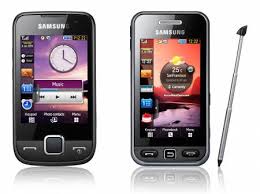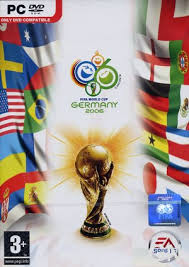What do gamers look for in any video game? Obviously the answer will be different from one another as everyone has varied choices. No wonder the video game companies come up with amazing and distinct games to play. Whether you love action-adventure shooting, RPGs, or nerve-testing strategy games, PC games provides them all. Even though there are many other, better video game consoles in the market today, there are players who still can't get enough of the best computer games these companies have to offer. If you're a fan (just like my brother who can't get enough of World of Warcraft, and he's 22), here's a list of not just top 10 games of all time, but 100 best PC games. Let's check them out.
Best Computer Games of All Time
Compiling a list of top computer games sounds fun, doesn't it? Not entirely. Of course it's fun, but along with that comes a huge task of adding the best computer games for kids and adults, people who take playing video games very seriously. Perhaps you may not be completely happy with the list, however it has been put together keeping one thing in mind: entertainment.
Best Computer Games of All Time
Compiling a list of top computer games sounds fun, doesn't it? Not entirely. Of course it's fun, but along with that comes a huge task of adding the best computer games for kids and adults, people who take playing video games very seriously. Perhaps you may not be completely happy with the list, however it has been put together keeping one thing in mind: entertainment.
- Battlefield: Bad Company 2 - 2010
- Warhammer 40000: Dawn of War II - 2009
- ArmA II: Operation Arrowhead - 2010
- Empire: Total War - 2009
- Deus Ex - 2000
- Demigod - 2009
- Half-Life 2 - 2004
- Civilization IV - 2005
- World of Warcraft - 2004
- SPORE Galactic Adventures - 2009
- Harry Potter and the Half-Blood Prince - 2009
- Killing Floor - 2009
- The Sims 3 - 2009
- The Secret of Monkey Island - 1990
- Age of Conan: Rise of the Godslayer - 2010
- The Elder Scrolls III: Morrowind - 2002
- Mass Effect 2: Overload - 2010
- Half-Life - 1998
- SPORE Creepy and Cute - 2008
- Rome: Total War - 2004
- Napoleon: Total War - 2010
- System Shock 2 - 1999
- Doom - 1993
- Grand Theft Auto IV: Episodes from Liberty City - 2010
- Battlefield 2142 - 2006
- Dragon Age: Origins - 2009
- Grand Theft Auto: Vice City - 2003
- Unreal Tournament (UT2004) - 2004
- The Elder Scrolls IV: Oblivion - 2006
- Football Manager 2007 - 2006
- Max Payne 2: The Fall of Max Payne - 2003
- Company of Heroes - 2006
- Singularity - 2010
- Call Of Duty - 2003
- Operation Flashpoint - 2001
- Quake III: Arena - 1999
- Eve Online - 2003
- Fallout - 1997
- Star Wars: Knights of The Old Republic - 2003
- Baldur's Gate II: Shadows of Amn - 2000
- Diablo II - 2000
- Counter-Strike: Source - 2004
- Mafia - 2002
- Plain Sight - 2010
- Vampire: The Masquerade - Bloodlines - 2004
- Wing Commander IV: The Price of Freedom - 1995
- Far Cry - 2004
- Ultima VII: The Black Gate - 1992
- GTR 2 - FIA GT Racing Game - 2006
- Battlefield 1942 - 2002
- Pro Evolution Soccer 6 - 2006
- Prince of Persia: The Sands of Time - 2003
- IL-2 Sturmovik: 1946 - 2006
- Need For Speed: Most Wanted - 2005
- Psychonauts - 2005
- Sam & Max Hit the Road - 1993
- Microsoft Flight Simulator X - 2006
- Warcraft III: Reign of Chaos - 2002
- Tropico 3: Absolute Power - 2010
- Duke Nukem 3D - 1996
- Quake - 1996
- Command & Conquer 3: Tiberium Wars - 2007
- X-COM: UFO Defense - 1994
- Commandos 2: Men of Courage - 2001
- Aliens vs Predator 2 - 2001
- Star Wars Jedi Knight: Dark Forces II - 1997
- Beyond Good & Evil - 2003
- Syndicate - 1993
- Black & White - 2001
- Carmageddon II: Carpocalypse Now - 1998
- The Sims 2 - 2004
- EverQuest - 1999
- Medal of Honor: Allied Assault - 2002
- Tomb Raider - 1996
- Thief: Deadly Shadows - 2004
- Neverwinter Nights - 2002
- Guild Wars - 2005
- TIE Fighter - 1998
- Age of Empires - 1997
- Planescape: Torment - 1999
- Dungeon Keeper - 1997
- X3 Reunion - 2005
- SWAT 4 - 2005
- SimCity 2000 - 1993
- Garry's Mod - 2006
- Trackmania: United - 2007
- S.T.A.L.K.E.R.: Shadow of Chernobyl - 2007
- Warhammer 40000: Dawn of War - 2004
- Fahrenheit - 2005
- Total Annihilation - 1997
- Final Fantasy VII - 1998
- The Longest Journey - 1999
- Uplink - 2001
- No One Lives Forever 2 - 2002
- Frontier: Elite II - 1993
- The Chronicles of Riddick: Escape From Butcher Bay - 2004
- Grand Prix Legends - 1998
- Splinter Cell - 2003
- Silent Hunter III - 2005
- Cave Story - 2005

































